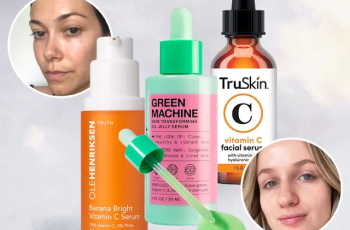
How many types of hyaluronic acid are there?
We’ve shared our love for hyaluronic acid with you in the past. It’s a truly remarkable skincare ingredient that offers a host of benefits, such as smoothing fine lines, locking in moisture, and giving skin an overall hydrated, youthful appearance. For more information and a full introduction to using this amazing ingredient, check out our dedicated blog post on hyaluronic acid and its skincare benefits.
However, now we’re going to explore how many types of hyaluronic acid there are, what the differences are between them, and how you should use them in your skincare routine. We’ll answer all of these questions and any others you may have at this point, so let’s get started.
Is all hyaluronic acid the same?
Technically, there are three types of hyaluronic acid molecules found in skincare:
Hydrolyzed hyaluronic acid
Sodium acetylated hyaluronate
Sodium hyaluronate
You’ll no doubt find that your favorite hydrating serums and moisturizers have a large blend of HA molecules in their formula to give the product maximum benefits. All three hyaluronic acid molecules share the same hydrating properties and are humectants, which is basically their superpower. Once they are applied to the skin, they absorb moisture from the environment and draw it to your face, locking moisture into the upper layers of the skin.
However, there are some differences between the hyaluronic acid molecules that are added to many skincare products, specifically between hyaluronic acid and sodium hyaluronate. Both are collectively referred to as “hyaluronic acid” in the beauty world, but the main difference is that sodium hyaluronate has a smaller molecule size, which allows it to penetrate the skin faster. Sodium hyaluronate is actually the salt form of hyaluronic acid, and is water-soluble, meaning it can absorb 1,000 times its weight in water. This also makes sodium hyaluronate a more stable molecule to add to skincare, as it is less likely to oxidize. However, there is a downside to this type of hyaluronic acid, as the higher its percentage in a formula, the sooner the skin will begin to dry out. Keep in mind that it is best to avoid using more than 4% sodium hyaluronate to prevent unwanted skin drying reactions, as too much can strip the skin of moisture it already has. Due to its stability, it is used in skincare products along with other hyaluronic acid molecules to make the formula more balanced and effectively hydrate the skin.
Which form of hyaluronic acid is best?
This is a very tricky question because narrowing down the pros and cons of each hyaluronic acid molecule is more difficult than you might think. The advantage of the three different hyaluronic acids is that they blend well with each other and moisturize the skin, binding the surrounding moisture and maintaining the proper function of its protective barrier.
Introducing hyaluronic acid into your skincare routine is much easier than you might think. HA has no age limit and you will see many anti-aging and nourishing benefits of these hero ingredients. If you are over 25 and have not noticed any obvious signs of aging, using hyaluronic acid will delay the appearance of visible fine lines and wrinkles on your skin. Older people who may have noticed signs of aging will find that HA not only smooths the skin tone, but also delays thinning and sensitivity of the skin, improving the overall appearance of the face. So as long as you include products containing hyaluronic acid in your skincare routine, you are already getting the powerful moisturizing effects of this wonderful ingredient.
What percentage of hyaluronic acid is effective?
Technically, there is no foolproof way to clearly indicate the amount of hyaluronic acid in a skincare formula. In some cases, you may find a claim of 90% hyaluronic acid in the ingredient list or marketing of certain products, which is not entirely accurate. As we mentioned before, when the HA molecule Sodium Hyaluronate is present at levels above 4%, the skin can become very drying. Products such as serums, moisturizers, and cleansers actually contain about 1-2% hyaluronic acid mixed in a solution with a high water content. This not only affects the skin by moisturizing the outer layer, but it also supports the hydrating properties of the HA molecule mixture by drawing moisture from surrounding products applied to the skin. By diluting the percentage, you also have a greater chance of avoiding a drying skin reaction and keeping its microbiome layer intact and functional, meaning free radicals or other skin damaging agents cannot penetrate.
If you find that the percentage of hyaluronic acid in your over-the-counter skincare product is still not providing the hydration you need, a visit to a dermatologist should be your next step. Note that we also recommend patch testing any new products you add to your daily skincare routine to avoid reactions.
We hope that you now have a clearer idea of how many different types of hyaluronic acid there are, what effects you can expect when using it in different skincare products, and the formulas that create radiant and plumping effects when using hyaluronic acid. If you want to learn more about hyaluronic acid, how it works and how it compares to chemical peels, you can learn all about the skincare benefits of AHAs and BHAs in a dedicated blog post.
Don’t miss out on more skincare tips and expert advice on our YouTube channel! Click the Subscribe button to visit our green couch. You won’t regret it!


